new posts in all blogs
Viewing: Blog Posts Tagged with: Denmark, Most Recent at Top [Help]
Results 1 - 25 of 30
How to use this Page
You are viewing the most recent posts tagged with the words: Denmark in the JacketFlap blog reader. What is a tag? Think of a tag as a keyword or category label. Tags can both help you find posts on JacketFlap.com as well as provide an easy way for you to "remember" and classify posts for later recall. Try adding a tag yourself by clicking "Add a tag" below a post's header. Scroll down through the list of Recent Posts in the left column and click on a post title that sounds interesting. You can view all posts from a specific blog by clicking the Blog name in the right column, or you can click a 'More Posts from this Blog' link in any individual post.
Fifteen participants will be chosen from Bolivia, Colombia, Ecuador, Peru, and Venezuela to participate in an all-expenses animation development program.
The post South American Animators: Apply To This All-Expenses-Paid TV Development Program appeared first on Cartoon Brew.

By: Jerry Beck,
on 1/13/2016
Blog:
Cartoon Brew
(
Login to Add to MyJacketFlap)
JacketFlap tags:
Denmark,
Studios,
Kickstarter,
Song of the Sea,
Crowdfunding,
The Animation Workshop,
Mikkel Mainz,
Bo Juhl Nielsen,
Charlotte de la Gournerie,
Sun Creature Studio,
Tales of Alethrion,
The Reward,
Business,
Add a tag
From low wages to concussions, producing a crowdfunded indie animated series isn't a job for the faint of heart.
The post Thanks to Crowdfunding, Sun Creature Studio Reaps ‘The Reward: Tales of Alethrion’ appeared first on Cartoon Brew.
Designed for directors and producers from both animation and live-action documentary, AniDox:Lab expands storytelling possibilities by mixing the two schools of filmmaking.
The post Documentary Animators: Now Is The Time To Apply To Denmark’s AniDox:Lab appeared first on Cartoon Brew.
On April 9, 1940, the Nazis invaded Denmark. Caught off guard, the Danish military was no match for the invading Germans, and the government easily surrendered. At first, daily life continued almost normally, except for the constant presence of armed soldiers and gestapo everywhere. But soon, things changed and for the next five years, the peaceful Danish people lived under the yoke of military domination, the constant threat of starvation, and for Jewish citizens, the very real prospect of deportation and death. But not all Danes were willing to accept their country's surrender and submit to life under occupation and it wasn't long before ordinary citizens became clandestine resisters to the Nazis.
In her newest book,
Courage & Defiance, Deborah Hopkinson once again uses her considerable talent as a writer and researcher to explore the Danish resistance. Looking at the Nazi occupation of Denmark in chronological order from the first days to the last, Hopkinson introduces the reader to some remarkable people and events.
There is, for example, Niels Skov, a 20 year old apprentice toolmaker, who found himself so surprised, angry and ashamed that people went about their business after the invasion, that he resolved to fight back. The invaders may haven been mostly apprehensive young men like himself, but they were destroying everything Niels loved about Denmark. And so, much like the boys in the Churchill Club, Niels began his resistance activities by roaming the streets of Copenhagen seeking out Nazi vehicles he could sabotage- blowing them up and setting them on fire.
Another story Hopkinson explores in detail is that of Jørgen Kieler, a 20 year old medical student who was also outraged by the invasion and ashamed and saddened by Denmark's easy capitulation to the Nazis. Knowing he needed to do something to resist them, it wasn't until 1943 that Jørgen, his siblings and friends decided to write an illegal anti-Nazi underground newsheet,
Frit Danmark, aimed a fellow students. But soon, writing wasn't enough, and Jørgen became a saboteur as part of the
Holger Danske 2 resistance group.
And Jørgen wasn't the only Kieler to act against the Nazis. Hopkinson introduces readers to his sister Elsebet, who wanted to protest the occupation of her country, but was a pacifist. When the rumors spread that there was going to be a roundup of Danish Jews, Elsebet, along with the Kieler's friend Klaus Rønholt, traveled around the countryside asking for donations from farms and landowners to help fund a rescue of as many Jews as possible.
And then there is Tommy Sneum, a flight lieutenant in Denmark's air force. After Denmark's defeat, Tommy left the military and became a one man resistance plan. Realizing the German's had some kind of early warning system in place around Denmark to warm if any enemy planes are approaching, Tommy made it his business to find out where these systems were and get the information to Great Britain ASAP.
These are just some of the brave Danes that Hopkinson writes about in this compelling new work. The book is so well-written and organized, not to mention thought provoking, that it reads as though it were a spy novel, except the people are real and the events really did happen.
Good nonfiction about people, places and events is always so welcomed when it is done well. And I have been very fortunate to have read some truly remarkable nonfiction for this blog. Deborah Hopkinson's (
Knit Your Bit: A World War I Story) new book becomes a most welcomed addition to those already available.
Books about the resistance activities always begs the question can one person make a difference especially against such a large, powerful, well armed often unscrupulous force that made up the Nazi regime? I suspect that the resisters you will meet in
Courage & Defiance as well as the 7, 220 Jews who were able to escape Denmark with their help just before the Nazis would have rounded them up for deportation would have to say that yes, one person can and did make a difference.
Be sure to visit the other participants on the
Courage & Defiance Blog Tour
This book is recommended for readers age 9+
This book was provided by the publisher through
Edelweis Above The Treeline

By: Katherine Soroya,
on 8/3/2015
Blog:
OUPblog
(
Login to Add to MyJacketFlap)
JacketFlap tags:
Law,
Finland,
United Nations,
Norway,
nato,
iceland,
Denmark,
Nordic history,
*Featured,
international law,
Online products,
public international law,
OPIL,
Quizzes & Polls,
International Court of Justice,
Aarhus Convention,
Åland Islands,
ESIL,
helsinki final act,
Nordic Saami Convention,
oslo accords,
Stockholm Declaration,
Add a tag
Which Nordic state had sovereignty over Iceland until 1918? Which state was allowed to discriminate against a transgender woman by annulling her marriage? Who disputed ownership of Eastern Greenland before the Permanent Court of International Justice? In preparation for the European Society of International Law's 11th annual conference, this year held in Oslo, test your knowledge of Nordic countries in international law with our quiz.
The post How much do you know about Nordic countries and international law? appeared first on OUPblog.

By: Shelf-employed,
on 7/13/2015
Blog:
Shelf-employed
(
Login to Add to MyJacketFlap)
JacketFlap tags:
YA,
history,
WWII,
adult,
nonfiction,
J,
Non-Fiction Monday,
Denmark,
digital audiobook,
Add a tag
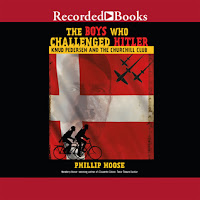 The Boys Who Challenged Hitler: Knud Pedersen and the Churchill Club by Phillip Hoose. Narrated by Phillip Hoose and Michael Braun. (2015, Recorded Books)
The Boys Who Challenged Hitler: Knud Pedersen and the Churchill Club by Phillip Hoose. Narrated by Phillip Hoose and Michael Braun. (2015, Recorded Books)
This is the heretofore little-known story of schoolboys who challenged the Nazi army even as their country's leaders collaborated with the Germans. Alternating first-person accounts of young saboteur, Knud Pedersen, with carefully researched narrative, Phillip Hoose tells the compelling story of these daring young boys who were willing to risk their lives to free Denmark from German occupation. Without their parents' knowledge, the boys raided, stole, and destroyed German property with nothing more than bicycles for transportation! Their heroic actions sparked the Danish resistance.
Michael Braun narrates the chapters containing Knud Pedersen's first-hand recollections of the events. While his delivery is weighty, it lacks personality. It is through the actions of Knud that the listener learns to like and admire him, rather than through his speech. Because the book is targeted at a young audience (ages 12-18) and Knud himself was only a teen at the time, a younger narrator may have been more appropriate. Author Phillip Hoose does an excellent job with the alternating chapters. He reads precisely and takes great care in the pronunciation of Danish names and places.
This is a well-researched, captivating story that proves the ability of individuals to effect change against overwhelming odds.
4 CDs
Review copy supplied by LibraryThing.


When the Germans invaded Denmark on April 9, 1940, many Danes welcomed them, but many more were filled with anger as they watched these soldiers taking over their towns and cities. But what could they do? The Danish army was simply no match for the Germans. They may not have been willing to take on Hitler but Knud Pedersen, 14, a successful student living in Odense, Denmark, decided he might just be able to do something himself.
Very carefully, Knud, his older brother Jens, and a handful of fellow students decided to form a resistance group. Calling themselves the RAF Club, named for the pilots who were defending Britain against Luftwaffe attacks, and modeling themselves on what they knew of the Norwegian Resistance, their goal was to disrupt their occupiers anyway they could.
It didn't take long for the RAF Club to gain a reputation, irritating the Germans and eluding the Danish police. But in the spring of 1941, Knud's father, a Protestant minister, moved his family north to Aalborg and a new church. Knud and Jens were enrolled in the Cathedral School there, and again, it didn't take long for them to form a new resistance group with their new school chums. This time, they called themselves the Churchill Club, after their hero, Winston Churchill.
The boys of the Churchill Club, with bikes as their only means to transportation, began to commit acts of satotage all over Aalborg. Not satisfied with vandalizing Germany property, usually setting fire using a small can of petrol they carried in the book bags, the boys decided they needed weapons.
Cautiously waiting and watching, the boys slowly began to acquire guns from unattended German cars, creeping into rooms and taking guns right out of the holdsters of German solders, even sneaking into coat rooms in restarurants to help themselves to whatever weaponry they could find. Pretty soon, they had quite a cache of guns and ammunition, even snagging a machine gun at one point.
And the boys managed to frustrate the Germans to the point that their resistance activities were known about in Nazi headquarters in Berlin. Both the Danish police and the Nazis were trying to catch these resisters, at first never dreaming these acts of sabotage were being committed by a group of schoolboys. And there were plently of close calls that could have ended in their capture.
But in May 1942, the Chuchill Club's luck ran out and the boys were arrested. They were tried and imprisoned, most of the boys sent to an adult prison, where they were essentially in solitary until their release in 1944. Imagine their surprise when they returned home and discovered to what extent the Danish Resistance had grown. Because a handful of young boys, ashamed of their country's behavior in the face of occupation, decided to do something on their own? Certainly, that is what Philip Hoose implies and I am inclinded to agree. Once the boys were caught, and despite Nazi censorship attempts, the Churchill Club became an international story.
The Boys Who Challenged Hitler is a inspiring, rivating story about courage, conviction and action. Hoose interviewed Knud Pedersen for a week in 2012 and so a great deal of this book consists of his recollections, told verbatim. In between, Hoose gives the reader enough information about Denmark, including why it was important to the Germans, about life under the German occupation, the attitude of the Danish people - including Nazi collaborators.
There are numerous photographs throughout the book, including photos of the boys in the Churchill Club. In the photo below, I believe the tall boy with the pipe is Knud, since he comments several times that he was the tallest of the group. I read the ARC, so I hope this photo is labelled in the published edition. And a word about the pipe - all of these boys, who were in their mid-teens, smoked a pipe.
 |
| The Churchill Club |
Hoose does end the book by telling the reader what became of each of the members of the RAF and the Churchill Club after the war. These is also a Selected Bibliography, including books, articles and web sites, even YouTube recordings the reader can listen to, and extensive Notes.
The Boys Who Challenged Hitler: Knud Pedersen and the Churchill Club is a well-written, well-researched book by an author who specialized in nonfiction about young people making a difference and is one that I believe teen readers will find exciting, informative and even relatable.
Philip Hoose offers an excellent teracher's discussion guide for this book
HERE
During May 2015 you can enter to win a copy of
The Boys Who Challenged Hitler on
Goodreads
This book is recommended for readers age 12+
This book was an EARC received from
NetGalley and will be available May 12, 2015.

"The Unusual Discoveries of Captain Turkey Nose" is a collaborative project between illustrator Patrick Steptoe and animator Benjamin Agersted.

By: Hannah Paget,
on 10/25/2014
Blog:
OUPblog
(
Login to Add to MyJacketFlap)
JacketFlap tags:
Denmark,
copenhagen,
Nordic noir,
helen constantine,
Soren Kierkegaard,
travel guide,
Danish literature,
Arts & Humanities,
City Tales,
Copenhagen Tales,
Lotte Shankland,
Meir Goldschmidt,
Scandinavian noir,
Books,
Literature,
short stories,
read,
Language,
noir,
translation,
hans christian andersen,
english,
Add a tag
From the narrow twisting streets of the old town centre to the shady docklands, Copenhagen Tales captures the essence of Copenhagen and its many faces. Through seventeen tales by some of the very best of Denmark’s writers past and present, we travel the length and breadth of the Danish capital examining famous sights from unique perspectives. A guide book usefully informs a new visitor to Copenhagen but these stories allow the reader to experience the city and its history from the inside. Translator Lotte Shankland is a Copenhagener by birth who has lived many years in England. In the videos below she discusses the collection, decribing the richness of Danish literature, as well as the Scandinavian noir genre.
Lotte Shankland on the greater significance of short stories within Denmark:
Lotte Shankland discusses her favourite short story, ‘Nightingale’, by Meir Goldschmidt:
From Hans Christian Andersen to Søren Kierkegaard, Denmark has been home to some of the finest writers in Europe. In the National Museum in Copenhagen you will find stories from as early as 1500 BC, covering myth and magic. A walk through the city will most likely involve an encounter with the emblematic statue of the Little Mermaid from Hans Christian Andersen’s famous tale. The Danes continue to tell great stories, as evidenced by the hugely popular Danish TV series The Killing and the Sweedish co-production The Bridge. Copenhagen Tales offers a way to understand the heart and soul of this diverse city, through the literature and art it has generated.
Featured image credit: Copenhagen, Denmark. Public Domain via Pixabay.
The post Short stories from the Danish capital appeared first on OUPblog.

Ever since the Nazis invaded Denmark, David Nathan, 10, and his best friend Elsa Jensen have been hungry, despite the fact that his dad is the best baker in all of Copenhagen. But the Nazis have been helping themselves to whatever they want since 1940, and that includes anything that they fancy in Nathan's Patisserie
Now, it is September, 1943 and David is looking forward to Rosh Hashanah and his mother's special honey cake all month long. The Jewish New Year is always a family celebration shared with Elsa's family. If only he thought his sister might be there, but university studies keep her at school more and more.
Or so David's mother tells him whenever he asks about Rachel. But on their way home from school one afternoon, Elsa tells David her secret - Rachel and Elsa's cousin Arne are in the Resistance, doing whatever they can to sabotage the Nazis.
That very afternoon, when he arrives at his father's bakery, David is asked to deliver 6 éclairs to Arne's house and to make sure all 6 get there. But no sooner does David leave the shop, when he is stopped by two Nazi soldiers who insist on seeing what he has in his bakery box. Seeing the éclairs, each soldier helps himself to one.
Finally, David is able to deliver the remaining four éclairs to Arne, who immediately dips his finger into each, finally pulling out a piece of paper from the last one. All David can make out is the word train. A few days later, David's father tells him that a train has been sabotaged by the Resistance, and David proudly realizes he had actually played a role in that.
And at last Rosh Hashanah arrives. The longed for honey cake has been made, but when David and his father are sitting in the synagogue, the Rabbi announces that the Nazis are planning to round up Denmark's Jews that very night and advises everyone to go home and prepare for their escape.
Well, we know the end of this story because we know that Denmark's citizens did not allow the Nazis to capture most of that nation's Jewish citizens, and so we know that David and his parents escape to Sweden with the help of their friends the Jensens. But, of course, young readers may not know this.
A Time to be Brave is a nice easy reader chapter book that provides a good introduction to what happened in Denmark in World War II. It is the perfect book for a young reader who is not quite ready for
Number the Stars.
The writing is simple. never condescending, the story is straightforward and the characters well-drawn. There is nice back matter, too, including a map of Denmark and Sweden, a World War II timeline, explanations of who Victor Borge is (yes, he in mentioned in the novel), the Resistance, King Christian X (an important figure to the Danish people during the war), and a recipe for honey cake (that I may have to try making).
If
A Time to be Brave sounds vaguely familiar, it is because it was originally published in 2008 under the title
Honey Cake. I suspect it has been reissued under the new title because it now has "
updated content that emphasizes Common Core and renewed interest in nonfiction" even though the story is fiction. It is, however, based on a true story.
This book is recommended for readers age 7+
This book was provided by the publisher

What's the best way to encourage young people to vote? The Danish parliament (or Folketinget) decided that the answer was an ultra-violent, sex-filled Adult Swim-style cartoon. To encourage young Danes to vote in the upcoming European elections, the Folketinget commissioned a 90-second piece of animation starring a leather-clad dolphin-riding muscleman named Voteman who gets blowjobs from an army of women when he's not busy decapitating Danish people who don't vote. The reported budget for the piece was $30,000.
It's 1943 and Denmark has been occupied by the Nazis since 1940. One morning, when young Anett comes downstairs, her mother tells her that there are 'new friends' in the basement. Anett isn't the least bit surprised to hear this and simply goes downstairs to the secret room to bring breakfast to young Carl and his mother, Danish Jews waiting for a fishing boat that will take them to the safety of Sweden.
The nights are foggy and cloudy, and the new friends can't leave right away. Each day, Anett stops to pick up things they need - extra bread from the bakery, extra eggs from the farmer, extra books from the library for Carl to read. And at each stop, Anett whispers to the baker, the farmer, the librarian that there are new friends who need these extras.
But each day, on her way home, Anett sees the Nazi soldiers knocking on doors, looking for hidden Jews and with orders to arrest everyone in the house if any are found. Then one day, Anett sees the Nazi soldiers heading for her house. She hurries around to the back door, but when she enters, the house is empty.
When the Nazi soldiers knock, Anett tells them there are no Jews in the house, and though they go away, the solders do so with threats. Later, it becomes clear to her parents that they can't wait any longer. But how to get Carl and his mother to the harbor in a dark, cloudy, foggy night?
Well, young Anett has a solution. That night, as Carl and his mother leave the hidden room in the basement, all over the village there are whispers of "This way."
Jennifer Elvgren's simple depiction of this dangerous, yet heroic rescue makes this story all the more poignant. There is no sentimentality, but this gentle story shows ordinary people just doing what needs to be done to keep other people safe from Nazi hands. But it will no doubt elicit questions from curious young readers and is probably best read with an adult who can answer them age appropriately.
Fabio Santomauro used sparse, dark cartoonish illustrations that seem to work very well with the simplicity of the text and he has chosen a palette of the dark foreboding black, blues and grays broken up with bits of reds, yellows and khaki dialogue against an almost white background. The dialogue is done in word bubbles. This style may attract young readers and make them feel comfortable, but there is nothing cartoonish or funny about the story.
By now, most of us are familiar with the story of how Danish Jews were smuggled out of Denmark by Danes who refused to support and collaborate with their Nazi occupiers. In fact, according to the
United States Holocaust Memorial Museum, the Danes were the "only occupied country that actively resisted the Nazi regime's attempts to deport its Jewish citizens."
So it is no surprise that the best resistance, rescue and escape stories set in Denmark always come from real life. In her Author's Note, Elvgren writes that
The Whispering Town is based on one of the true stories from the fishing village of Gilleieje. And if Gilleieje sounds familiar to you, you may remember it from
Number the Stars by Lois Lowery. Elvgren writes, 1,700 Jews escaped from this small fishing village. In fact, Danes managed to evacuate 7,220 out of 7800 Danish Jews, 668 of their non-Jewish spouses.
 |
| Gilleieje is the uppermost town in Denmark |
If you are looking for a way to introduce young readers to the Holocaust,
The Whispering Town will definitely help you do that.
This book is recommended for readers age 5+
This book was purchased for my personal library


Designbolaget is a Copenhagen based design studio working at the intersections of art, fashion and culture. Founded in 2002 by Claus Due, the studio has been recognized with numerous awards.
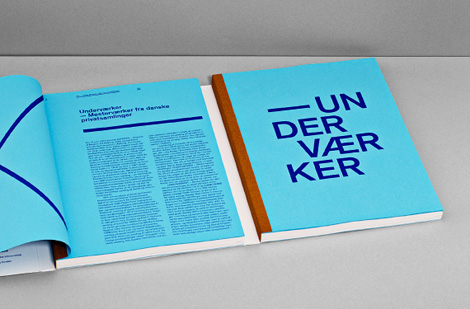
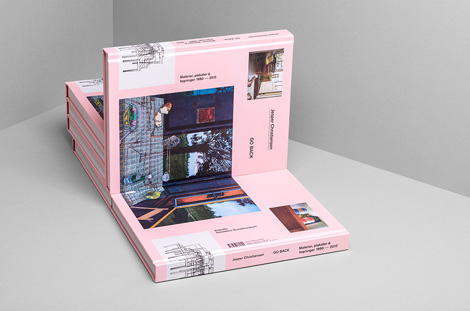

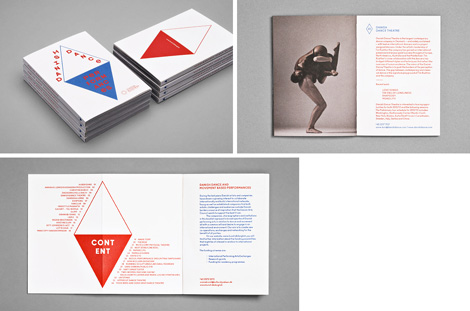
——————–
Also worth viewing:
Ross Gunter
Philographics
Lufthansa + Graphic Design
Not signed up for the Grain Edit RSS Feed yet? Give it a try. Its free and yummy.
——————–
 Share on Facebook
Share on Facebook
Thanks to Signazon for being this week's sponsor.

The keyword in computer animation nowadays is “fun.” More and more artists appear to be exploring the possibilities of cartoon-inspired design and movement in CGI. A recent effort in this direction is Rob ‘n Ron directed by Magnus Igland Møller and Peter Smith of the up-and-coming Danish animation studio Tumblehead.
The unlikely combination of real sets—yes, they’re handmade—combined with the Cartoon Modern -esque character designs is immediately compelling. Achieving humorous computer animation with these type of design choices isn’t an easy assignment, but the creators of Rob ‘n Ron handled the challenge with ease.
-esque character designs is immediately compelling. Achieving humorous computer animation with these type of design choices isn’t an easy assignment, but the creators of Rob ‘n Ron handled the challenge with ease.
Their creative solutions to movement can be seen in this rigging demo, which is almost as much fun to watch as the short itself:
CREDITS
Directors: Magnus Igland Møller, Peter Smith
Script and Storyboard: Mads Juul
Backgrounds: Eva Lee Wallberg, Christian Bøving Anderson, Andreas Husballe
Animation: Eva Lee Wallberg, Christian Bøving Anderson, Lars Ellingbø, Peter Smith
Compositing: Lars Ellingbø
Pipeline: Soren Berg Nørbaek
Music and Sound: Thomas Richard Christensen, Peter Smith,
Jody Ann Ghani, Sia Søndergaard
(Thanks, Erik Barkman, via Cartoon Brew’s Facebook group)
By: Grant Overstake,
on 7/26/2013
Blog:
(
Login to Add to MyJacketFlap)
JacketFlap tags:
Chile,
Uncategorized,
Canada,
Japan,
Taiwan,
Amazon,
Philippines,
Mexico,
France,
Australia,
India,
Poland,
Germany,
New Zealand,
Pakistan,
Puerto Rico,
Belgium,
Spain,
Slovenia,
United Kingdom,
Finland,
South Africa,
Brazil,
Singapore,
Nicaragua,
Ireland,
Netherlands,
Italy,
Turkey,
Israel,
Switzerland,
Nigeria,
Sweden,
Indonesia,
Mongolia,
Thailand,
Argentina,
Morocco,
Peru,
Jamaica,
Norway,
Egypt,
Indiebound,
Iceland,
Venezuela,
Bahamas,
Denmark,
Greece,
United States,
Portugal,
Czech Republic,
Colombia,
Romania,
Croatia,
Saudi Arabia,
Hong Kong,
Ukraine,
Jordan,
Yemen,
Algeria,
Hungary,
Bermuda,
Ecuador,
Bulgaria,
Estonia,
Tunisia,
Trinidad and Tobago,
Girls Sports,
Bahrain,
Lithuania,
Namibia,
United Arab Emirates,
Grant Overstake,
Inspirational Sports Stories,
Maggie Vaults Over the Moon,
young adult sports,
KSHSAA,
Pole Vault Fiction,
Track and Field Stories,
sports novels,
Recommended sports books for teens,
Watermark Books and Cafe,
Kansas State High School Activities Association Journal,
Austria Botswana,
Insirational Sports Books,
Isle of Man,
Republic of Korea,
Russian Federation,
Add a tag
Maggie Steele, the storybook heroine who vaults over the moon, has been attracting thousands of visitors from around the world. So many visitors, in fact, that she’s using a time zone map to keep track of them all.* People are … Continue reading →
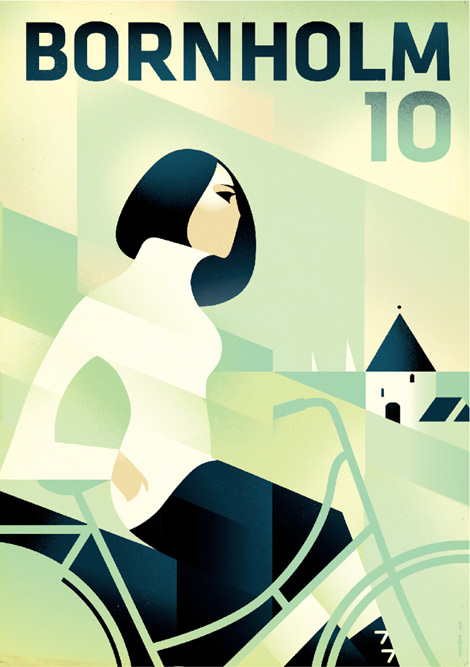
Mads Berg is an illustrator out of Denmark and a 2001 graduate from the Danish School of Design where he now occasionally lectures. Working from a deep passion of classic poster art and Art Deco aesthetics he creates lush landscapes where hard angles co-exist with soft, streamlined shapes in perfect harmony.
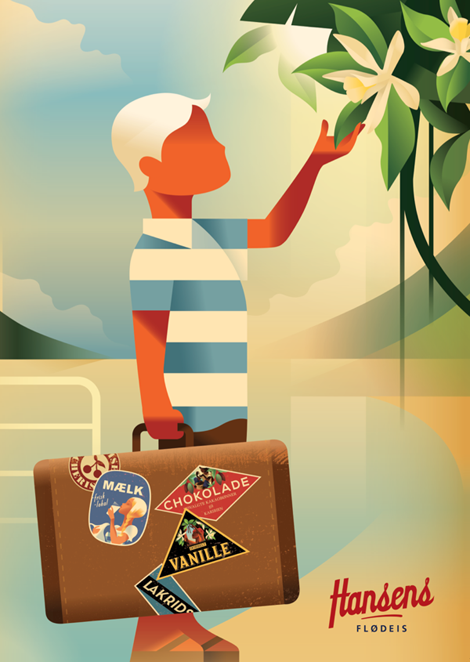

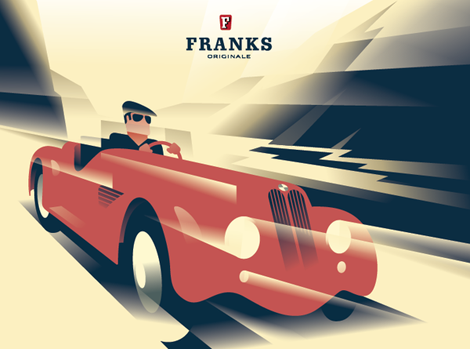
——————–
Also worth viewing…
Lotta Nieminen
Lesley Barnes
Jesse Ragan
Not signed up for the Grain Edit RSS Feed yet? Give it a try. Its free and yummy.
Share This
Featured Book:
Irving Harper: Works in Paper.
A Huge thanks to Squarespace for sponsoring this week’s RSS Feed!


Thorbjørn Gudnason is an up-and-coming graphic designer, currently pursuing his BA from the School of Visual Communication in Denmark. Having completed an internship with Pentagram in the past few months, Gudnason is sure to blossom into an increasingly talented designer as he continues to develop his style.
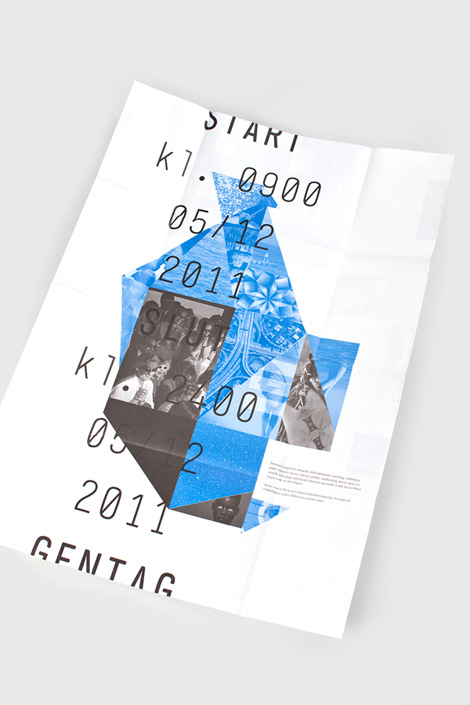

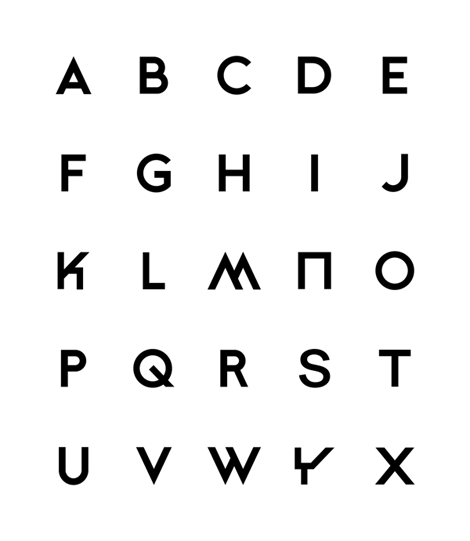
——————–
Also worth viewing:
Mark Weaver
Ken Leung Interview
Recent Books
Not signed up for the Grain Edit RSS Feed yet? Give it a try. Its free and yummy.
Share This
Featured Book:
Irving Harper: Works in Paper.
A Huge thanks to Squarespace for sponsoring this week’s RSS Feed!

Tor Fruergaard’s graduation film Venus is billed as an “erotic comedy,” but it’s a surprisingly sweet and sensitive portrayal of a couple resorting to extreme measures to reignite the spark in their relationship. Created at the National Film School of Denmark in 2010, Venus won the animation prize at Slamdance last January, and has screened in numerous festivals including Annecy.
Cartoon Brew |
Permalink |
No comment |
Post tags: Den Danske Filmskole, Denmark, National Film School of Denmark, Tor Fruergaard
.jpg?picon=572)
By:
andrea joseph,
on 4/2/2012
Blog:
andrea joseph's sketchblog
(
Login to Add to MyJacketFlap)
JacketFlap tags:
in my head,
Scandinavia,
AJ,
andrea joseph,
carnet de voyage,
drawn by Andrea Joseph,
Andrea Joseph drawings,
travel,
moleskine,
ink,
colour pencil,
Sweden,
Norway,
Denmark,
airmail,
Add a tag
 This is an X-ray of my head right now. That's exactly what's going on in there at the moment. I get on into a project and I live and breathe it.
This is an X-ray of my head right now. That's exactly what's going on in there at the moment. I get on into a project and I live and breathe it.
I was hoping to post this drawing over the weekend but it took far longer than I'd anticipated. I reckon there's, at a guess, around 16-20 hours work in this spread. I suppose in the grand old scheme of things that's not so long. When you think of how long people take making books or albums then it's a drop in the ocean.
I often think about the making of an album when, late at night when the rest of the world is dreaming, I'm scribbling away creating this crazy stuff. I suppose it's a way of comforting myself. Have you ever seen the film about the making of a Springsteen album ('The Promise; The Making of the Darkness at the Edge of Town')? It's all about that crazy obsessive manic compulsive demanding compelling destructive beautiful creative drive. I bloody love that film, mainly because it reminds me that I'm not alone.
I also think that if I were making an album I would not want to listen to it for at least a year after it's completion. I'm just putting this sketchbook away for a couple of days.

By: Emily Smith Pearce,
on 6/24/2011
Blog:
Emily Smith Pearce
(
Login to Add to MyJacketFlap)
JacketFlap tags:
Europe,
Denmark,
plates,
Travel,
china,
Culture,
Germany,
vintage,
flea market,
thrifting,
ceramics,
Add a tag

I could just about feel the flea market in Copenhagen pulling me across the street. Come look! Cool bargains you won’t find anywhere else! Luckily, the family obliged for a few minutes, while I gasped over the budget prices for vintage Danish ceramics.
If you’ve ever been in Copenhagen, you know it’s not really a place for bargain shopping. So I was excited to find the blue Mother’s Day and the black/ white Bjørn Wiinblad plates. Just a few euros a piece for perfect souvenirs.

I’ve been interested in Bjørn Wiinblad since discovering his work in the pages of Holly Becker’s new book, Decorate. Jonathan Adler, whose home is featured in the book, collects Wiinblad, and I just love the zany, humorous figures. BTW, if you want some totally awesome inspiration for your home, get Holly’s book. I’m thinking about just setting up camp in its pages.
The Wiinblad plates are from a 12-month series. I got October and December.
The blue Mother’s Day plates, which are about dessert size but designed for hanging, are Royal Copenhagen from the 70′s. They made one of these plates for each year between 1971 and 1982.
The other two plates (playing children/ animals) I bought at a charity shop here in Hannover. They’re children’s china, something you find a lot more of here because children are expected to use “real” plates, not plastic, as well as real silverware and glass glasses. I just couldn’t resist the one with the children playing. So cute.
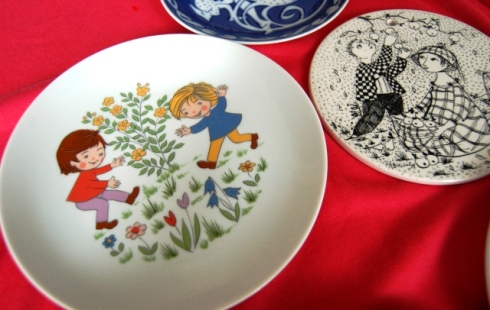
The animal plate cracks me up because the wolf is smoking a pipe—-such a taboo nowadays, especially on a product for children. This plate was made in East Germany. I’m not too worried about it turning my son into a delinquent.

The kids love their plates, and I’ve planned a spot on the wall for the Bjørn Wiinblad ones. I’m still looking for a home on the wall for the Mother’s Day plates.
The SCBWI (Society of Children’s Book Writers and Illustrators) Summer Solstice Scrawl Crawl was a lot of fun. This was an event blog where SCBWI members across Europe sketched and wrote all day on Tuesday and shared their creations on the same blog. Here’s my entry here, but make sure to check out the others. It’s really interesting to see where people were all across the continent.
I’ve been missing NPR lately and listening to a bunch of old Fresh Air interviews over the web. Favorites: Jason Schwartzman, Chloe Sevigny, Jason Segel, and Ted Danson. I guess I’m feeling like listening to actors. We’ve been watching HBO’s Bored to Death

By: Emily Smith Pearce,
on 6/14/2011
Blog:
Emily Smith Pearce
(
Login to Add to MyJacketFlap)
JacketFlap tags:
Denmark,
amusement park,
Copenhagen,
Danish architecture,
Tivoli,
Tivoli Gardens,
design,
food,
Travel,
Art,
Culture,
color,
architecture,
Inspirations,
Add a tag

Everyone had told me Copenhagen was beautiful, but it still surprised me. What a classy city. The Danes are a people dedicated to beautiful design.
We were lucky enough to have gorgeous weather, and the blue sky just heightened all the colors.
I highly recommend taking a canal tour. It’s a great way to hit all the highlights and besides is just fun, too. The kids enjoyed it but got a little restlesss toward the end of the hour.

This beauty is hanging out under a bridge or overpass-type thing:

No trip to Copenhagen would be complete without a stop at Tivoli Gardens, the 19th century amusement park right in the center of downtown Copenhagen.


An inspired Tivoli treat: churros with custardy softserve. Mmmmm….

If you enjoyed this post, you may want to check out my other posts about Denmark here and here.





 0 Comments on Colors of Copenhagen as of 6/15/2011 12:35:00 AM
0 Comments on Colors of Copenhagen as of 6/15/2011 12:35:00 AM
 Today’s post has been the hardest post to research since I began this blog. Why? Well, as part of Reading Round Europe I’ve been searching and searching for almost 6 months (yes, half a year – that’s how dedicated I am!) for some fantastic Danish picture books available in English translation to bring to you, to share with my girls and for us all to enjoy. But have I been able to find any?
Today’s post has been the hardest post to research since I began this blog. Why? Well, as part of Reading Round Europe I’ve been searching and searching for almost 6 months (yes, half a year – that’s how dedicated I am!) for some fantastic Danish picture books available in English translation to bring to you, to share with my girls and for us all to enjoy. But have I been able to find any?
Barely. I’ve found one or two Danish picture books that were nice enough, but not so brilliant, and I’ve seen references to one or two on the internet which I then haven’t been able to get hold of to read, let alone review. What’s going on with Danish children’s literature? Why are so few Danish picture books translated into English?
Nina Christensen, Associate professor at the Centre for Children’s Literature (Center for Børnelitteratur) wrote to me:
“I think one explanation could be different views on childhood and of the role of the adult in relation to children’s books.
You might find it a provocative statement, but when I enter a children’s book shop in England – or Sweden for that matter – I find that a majority of books are made in a way so that neither child nor parent/adult is challenged too much. Generally speaking picture books seem to confirm existing norms and conventions.
A lot of Danish picture books are also like that. But I think there is also a tendency in picture books from Denmark (and Norway), to expand the borders of how you can address also small children and which kind of stories you can tell them. Today, I am working on a presentation of some recently published Danish picture books: One of them is about children in a concentration camp (illustrations by Dorte Karrebæk), one of them about a girl in a third world country who lives in a dumping ground, and in a new humoristic and ironic version of H.C. Andersen’s “What the Old Man Does is Always Right” the main character, Osama, meets three prostitutes, a drug dealer and a homeless character.
Very simply put: In some Danish (and Norwegian) picture books (older) children are exposed to i.e. cruelty towards children, naked children, sex, less than ideal behavior presented in an ironic manner etc. In relation to these examples, the child reader is supposed to be “competent” – not an individual who should always be protected from strong or strange impressions. I think this could be one of reasons why so few of them are translated. I might be wrong.”
I’d love to be able to research this thesis. Certainly it seems to be a plausible hypothesis if you also look at an article in IBBY’s Bookbird journal, “A Challenge to Innocence – ‘Inappropriate’ Picturebooks for Young Readers” by Carol Scott (2005, Vol 43, no. 1 – available to read for free in pdf form here)

Photo: Mads Boedker
4 Comments on This post has taken me 6 months to write…, last added: 5/9/2011










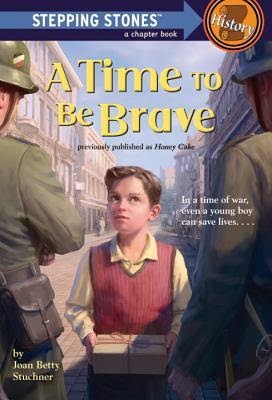




























 Today’s post has been the hardest post to research since I began this blog. Why? Well, as part of
Today’s post has been the hardest post to research since I began this blog. Why? Well, as part of 



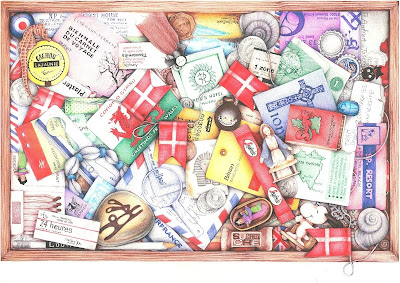 I was going to say that this is the finished version of the drawing I posted part of a little while back. But now looking at it on the screen I think it could do with more shading; a little sepia to give it an antique feel. That's how I had seen it in my head before I began. Also, I always intended adding a handle because it is supposed to be a drawer full of souvenirs. Or, the handle could have made it look like a suitcase. And, I love that ambiguity.
I was going to say that this is the finished version of the drawing I posted part of a little while back. But now looking at it on the screen I think it could do with more shading; a little sepia to give it an antique feel. That's how I had seen it in my head before I began. Also, I always intended adding a handle because it is supposed to be a drawer full of souvenirs. Or, the handle could have made it look like a suitcase. And, I love that ambiguity. 
I love this new drawing Andrea...your posts keep me going you know..:) I also think your handwriting is a major creative part of the whole creation and it's just amazingly consistent-like you!...I know NOW that working on a book is an enormous undertaking...my first bookis almost done and will be published soon-very happy day it will be...and when I get paid I will be able to purchase some of your fabulous prints!
Love this drawing! Wish my handwriting was as neat as yours :)
I love this soooo....much. It's one of my very favorite of all of your amazing pictures! Will you be offering it as a print?
And now I know...I'm not alone either!:)
And now I know...I'm not alone either!:)
An amazing drawing - so much to look at. It looks like 16 to 20 hours at least!
Amazing drawing and now thanks to your recommendation I have a new movie to watch!
Wow, that's the work! you are insane (in a good way, of course :))
I draw to comfort my mind too, it has appeared to be the best way to do it.
Great drawing and it sums up how full our minds get with a single topic.
the next time my head is feeling jumbled I'm going to think of it like this, instead of a mess!
Thank you, all so much folks. I'm so happy that you like this one because despite being very tired of it at the moment (16 hours or more!), I feel it will be one of my faves in time.
Tahirih, I'm not sure but I am looking into prints currently - where you can choose your drawing and I'll get them printed to order. i think I've found a good high quality prnter.
Cheers, everyone. Watch the movie if you get a chance. It's very good.
Thanks x